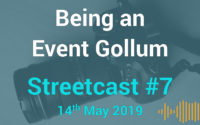KIT: Our Basic Setup
I use a Nikon D5200 together with Nikon’s older AIS lenses in manual mode. I originally bought the camera as a kit with the 18-105mm kit lens. The kit lens is absolutely useless; the results with auto-focusing are poor, the manual focusing is impossible, the lens does nothing to contribute to good crisp images. I have seen self-claimed “pro’s” recommending that kit lenses are good, in my opinion these lenses are not!
The Camera, Nikon D5200, is ok in so far as the sensor is sound, the body is stable, the price is reasonable and the ability to pack a real metal engineered Nikkor AIS lens on it, makes this an ok choice. The later D5xxx models remove the anti-aliasing filter which should provide for better images. The wife uses the D3300, which is basically a smaller bodied but similar sensor and processor version without the anti-alias filter. (She has smaller hands!)
The Lenses; Nikkor AIS 28mm f3.5, 50mm f1.8, 80-200mm f4, are all super lenses and provide results that are far superior to a kit lens. Aside the need to operate manually there are some really clear advantages. Firstly, the focus ring when set to infinity actually means infinity and not more or less as with the kit. Secondly, the engineering is simply solid and smooth. Operating with these lenses gives a feedback that is both positive and responsive. The aperture ring (don’t get that on a plastic lens from today) clicks with the engineering precision of a mechanical pocket watch or medical instrument.
Using manual in general – I didn’t want to turn the equipment use into a training, but I will say a few words about how to make this setup work. If anyone is interested in trying this too I will consider a video specifically on this topic and my experiences. Manual means that the shutter speed is set using the thumb dial with the right hand and the aperture and focus is with the left hand and controlled on the lens. This means that there is very little need to play with other settings or dreaded menus whilst shooting. This is the old way and worked for all the press and famous photographers of the past; funny how the manufactures want new photographers to “be dependent” and many seem to oblige. Both my wife and I dislike automation or having a battle with poor ergonomics to express ourselves, but we have the advantage that we both learnt photography using totally manual cameras.
Manual focus is not really supported with the digital cameras, it appears they are desperate that you get the automated lenses at ridiculous prices. It is however possible as the dioptre setting on the eyepiece can be set slightly off and this makes off-focus more extreme. Rolling between too close and too far seems to be more noticeable with this trick. There is a “green” dot or dot with arrows (camera model dependent) that tells you when focus is achieved.
Manual Exposure can be a little tricky. For me I seem to be able to judge any situation to within a stop or two of exposure. This is easier as time goes on. There are also a few tricks but I’ll go through those if someone is interested.
To summarise, my wife and I each have a Nikon DSLR body and share the three manual Nikkor AIS f-mount lenses. The proof of the pudding so to speak is the resulting pictures. If you like my pictures but your kit can’t seem to get similar results; considering I use virtually no post production, then a similar setup may be what you need. It is no surprise that the very same lenses were used in the past by professional photo-journalists, as the image quality and technical reliability is superb.
We have filters and other bits of kit which I will describe in another video later, but these are almost always carried but only used sparingly.


